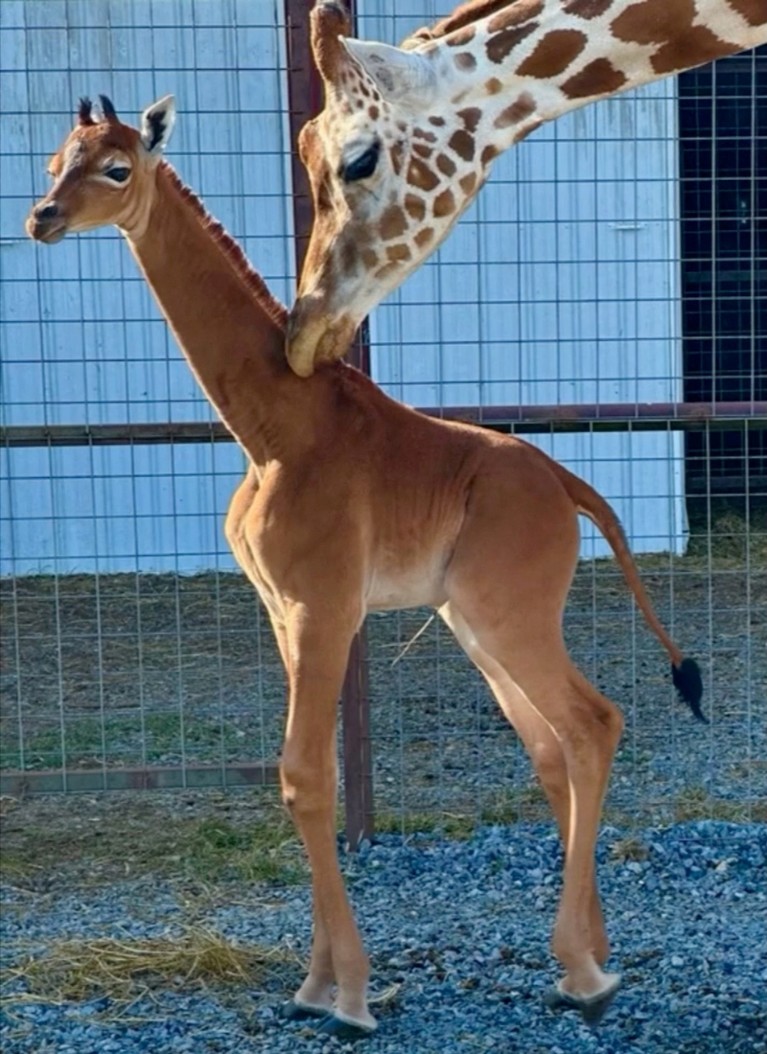Hello Nature readers, would you like to get this Briefing in your inbox free every day? Sign up here.

Credit: Brights Zoo/TMX/Reuters
A spot-free baby giraffe (Giraffa camelopardalis) born at a zoo in Tennessee is thought to be the only living giraffe without the characteristic patches that give each animal a unique pattern. The all-brown female’s rare colouring is caused by a genetic mutation, and she is otherwise “healthy and normal”, the zoo says. The last time the birth of a spotless giraffe was reported was in 1972 at a Tokyo zoo.See more of the month’s sharpest science shots, selected by Nature’s photo team.
Nature | Leisurely scroll
An artificial-intelligence system can describe how compounds smell simply by analysing their chemical structures. The neural network can provide descriptions, such as ‘grassy’, for hundreds of molecules, including some that don’t exist in nature. “There’s something special about smell,” says neurobiologist Alexander Wiltschko. It’s the only sensory input that goes directly from the sensory organ to the brain’s memory and emotional centres without passing through other brain regions — which is why scents can evoke specific, intense memories.
Nature | 5 min read
Cash-strapped Cochrane, an organization known for its influential systematic reviews, is undergoing a painful reorganization. The group started as a grass-roots, volunteer-powered organization of researchers and physicians, and became central to the rise of evidence-based medicine. Now, the loss of UK government funding, and a move to make all its reviews free to read without a subscription, means its future is in flux. As well as addressing financial pressures, Cochrane’s reorganization aims to address criticisms about how how long its reviews take to produce, and the balance between efficiency and excessive centralization.
Nature | 7 min read
Features & opinion
Table of Contents
From coal smoke smothering London in the seventeenth century to pollutants hastening the melting of Greenland’s ice cap today, a new book by media and technology researcher Jay Owens is an exploration of “tiny particles doing terrible things”. Some of the most powerful narratives in the book centre on dried lake beds, writes reviewer and Nature reporter Alexandra Witze. Owens’s exploration of how city-dwellers’ thirst turned a California lake into a dustbowl “tells the story beautifully, weaving together the strands of environmental justice, water rights and public health”.
Nature | 6 min read
A wave of excitement caused by LK-99 — the purple crystal that was going to change the world — has died down after studies showed that the material isn’t a superconductor. But a question remains: would a true room-temperature superconductor be revolutionary? The answer is that it depends — on the application, and on whether the hypothetical material also has other crucial qualities. But in some scientific fields, in particular those that use strong magnetic fields, better superconductors would be likely to have a huge impact.
Nature | 8 min read
